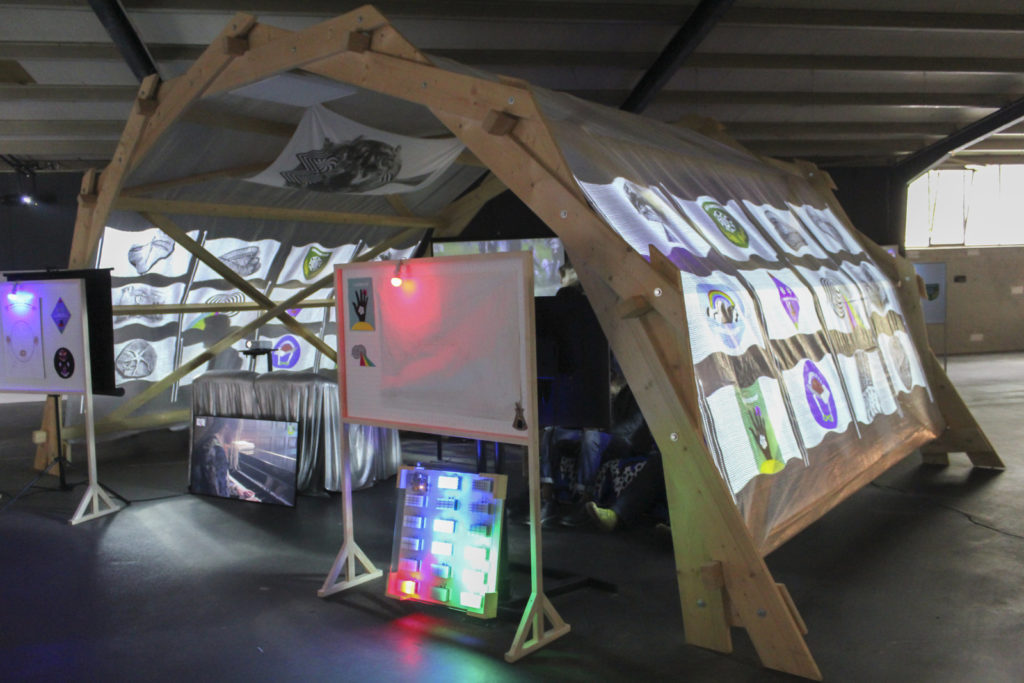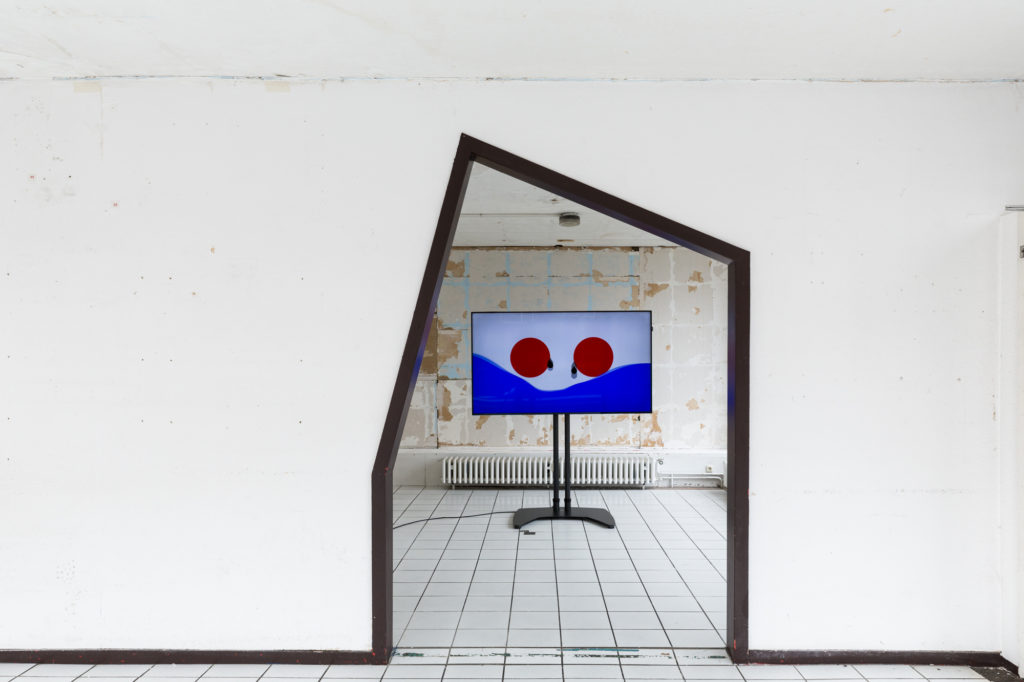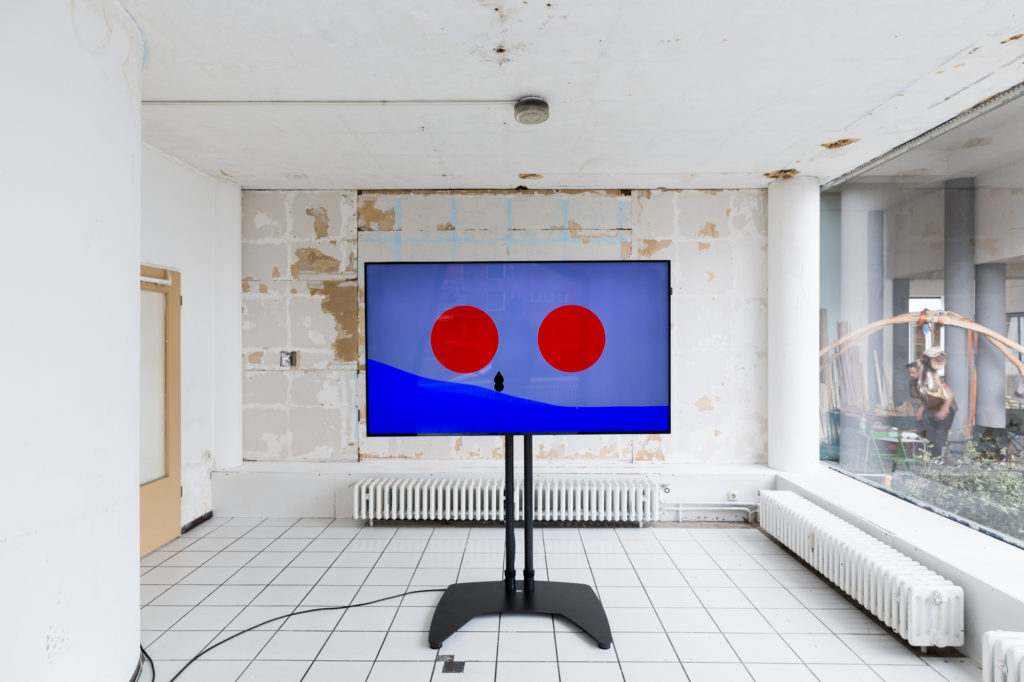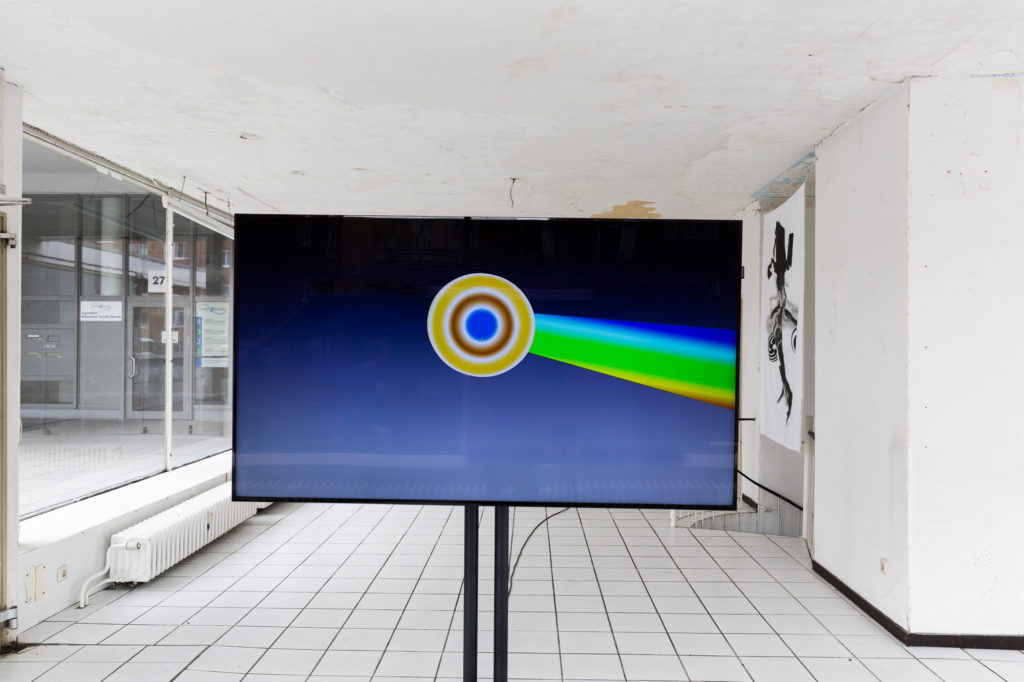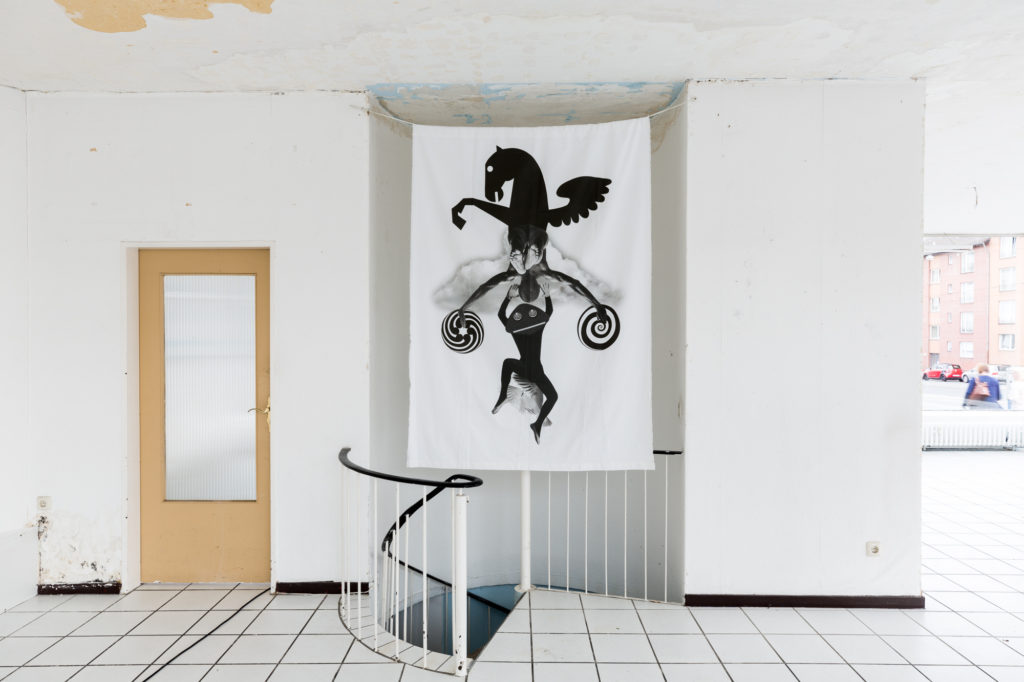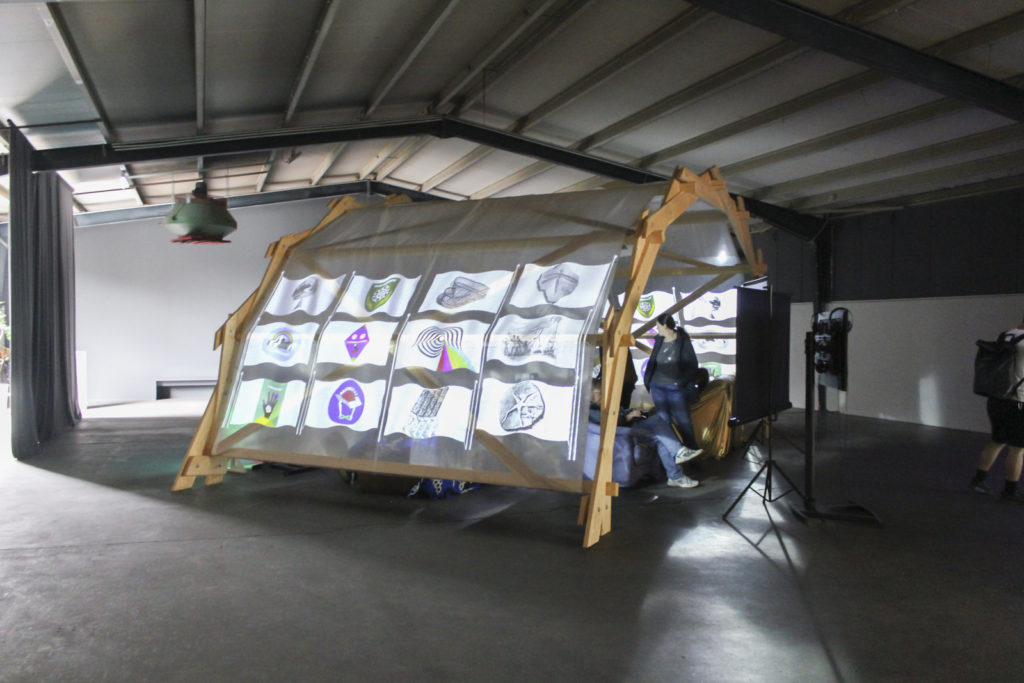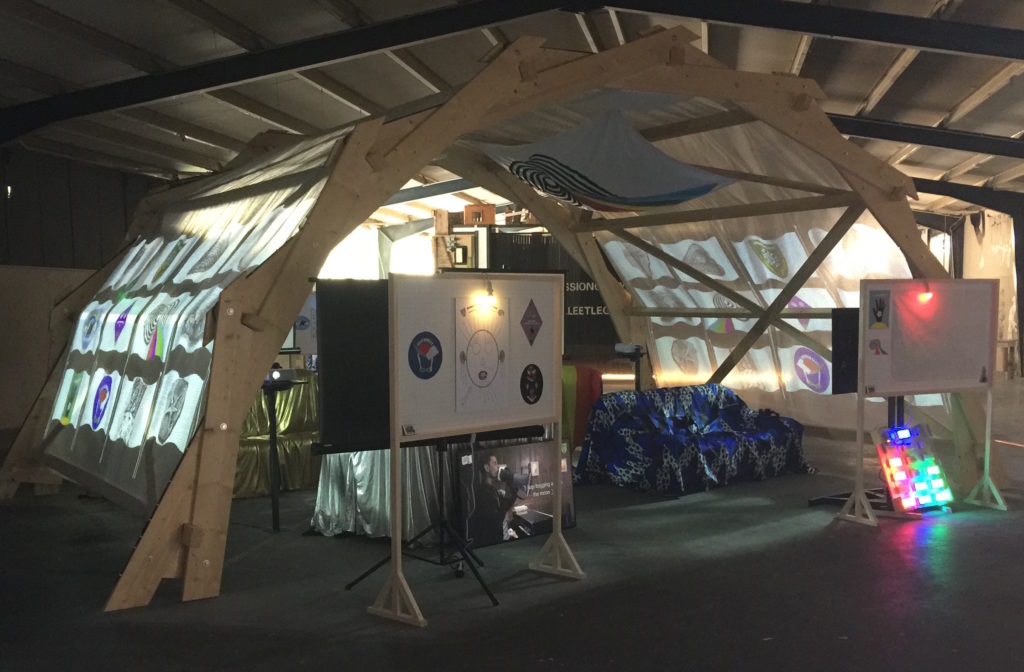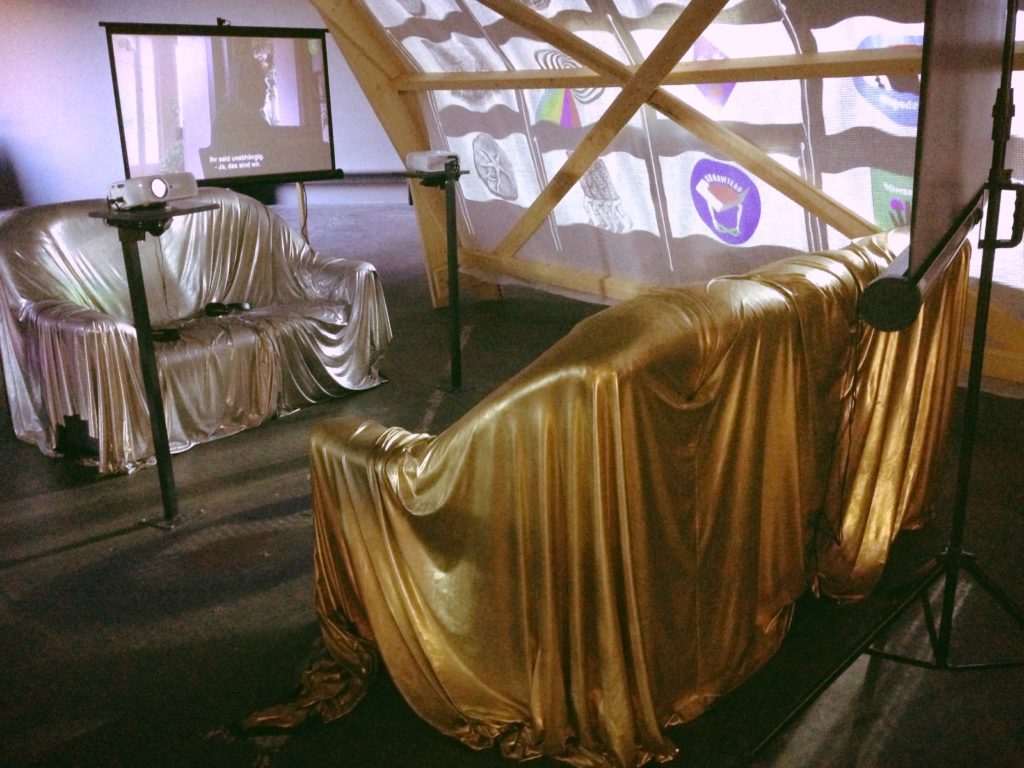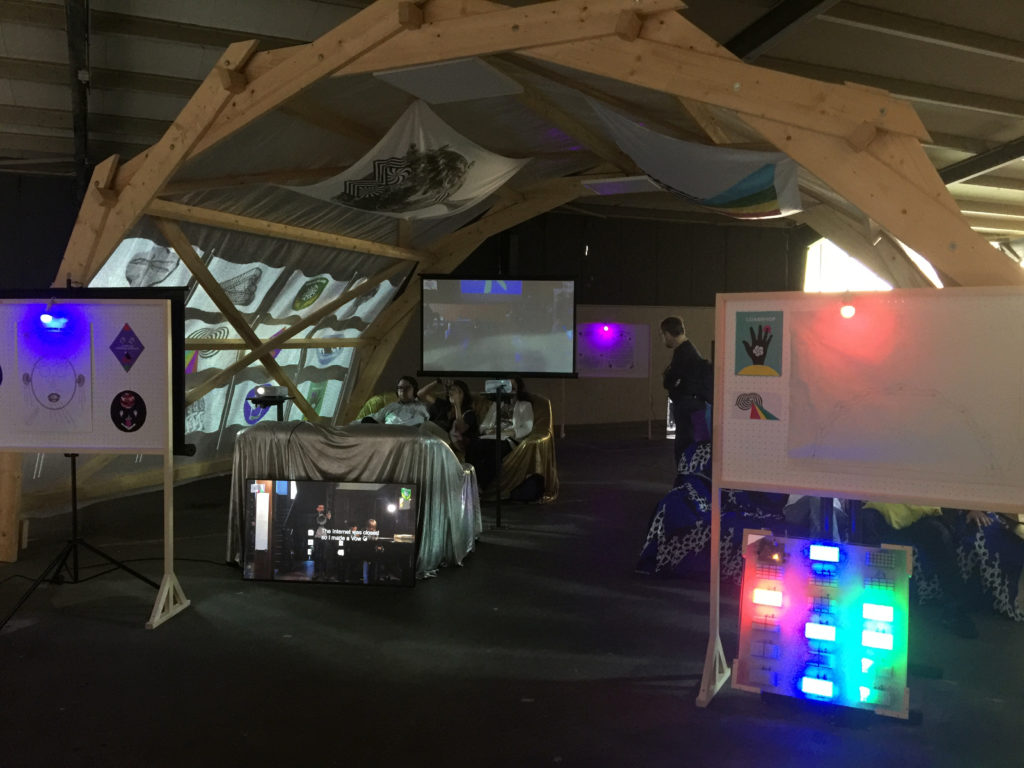Angelo Plessas
Documenta 14
June 10, 2017–September 17, 2017Kassel
As I walked back from the communal showers, I paused at the gate to take in the scene. It looked like a kid’s drawing of a small village, straw huts on the edge of the desert. The sun was rising over the Dead Sea, and I stood in wonder of this strange situation. I was there as part of Angelo Plessas’s third Eternal Internet Brother/Sisterhood, taking place in and around a semi- abandoned camping ground on the West Bank in a disputed area between Israel and Palestine. The night before, our group of twenty had sat around a fire playing “Manifesto,” a game that Plessas had invented on the spot. He would read a paragraph from a book of art manifestos, and we had to guess the movement. As a group of art-world adults, gradually losing any pretension, performing for no audience, we found ourselves in a fantasy version of a children’s camp, yet in a politicized place where one could not avoid reality. Was this the artwork? Were we the artwork?
Plessas, born in Athens in 1974, makes work in and around the internet. He registers domain names like SymmetryOfChaos.com and places his characters in situations, or he Google Street walks around the globe and picks locations for his gatherings. After each Brother/Sisterhood (2011– ) gathering, he stages elaborate and mesmerizing installations with the documentation of these yearly events; works that he claims are not sculptures but “promotional stands” for future gatherings. Instead of people, the installations are inhabited by videos documenting the past proceedings, along with YouTube statements announcing the next venture. Computerized voices proclaim that “ancient mythologies can network our contemporary condition”; “The Internet should not be misguided as a tool but more as a structure against hierarchies and social conventions”; “We become slaves to our clicks and likes”; and “Through a lack of temptation for the unknown, the biggest global selling merchandise ever is our attention.” Plessas’s work often references social experiments from the earliest days of technology, alternative manifestos on how to be an artist, and made-up recipes for “emotional interfaces” and “new social horizons.” In the case of “Brother/Sisterhood,” and the newly introduced “Experimental Education Protocol” (2016– ), it appears that artists, writers, and thinkers are indeed the medium for Plessas’s work. He gathers and documents the way they produce or play, acting both as facilitator and coach, playground chaperone and activator.
Walking along the internet, you find more of Plessas’s fantastic social domains in the form of websites, as this was the artist’s earliest medium. In these online gatherings, Plessas’s abstract talismanic characters shift identities with a click, interacting with one another in social and emotional situations, just as we did during our days as part of the Brotherhood. Online and off, Plessas’s gatherings constitute a series of experiments toward a future society.
—Andreas Angelidakis
